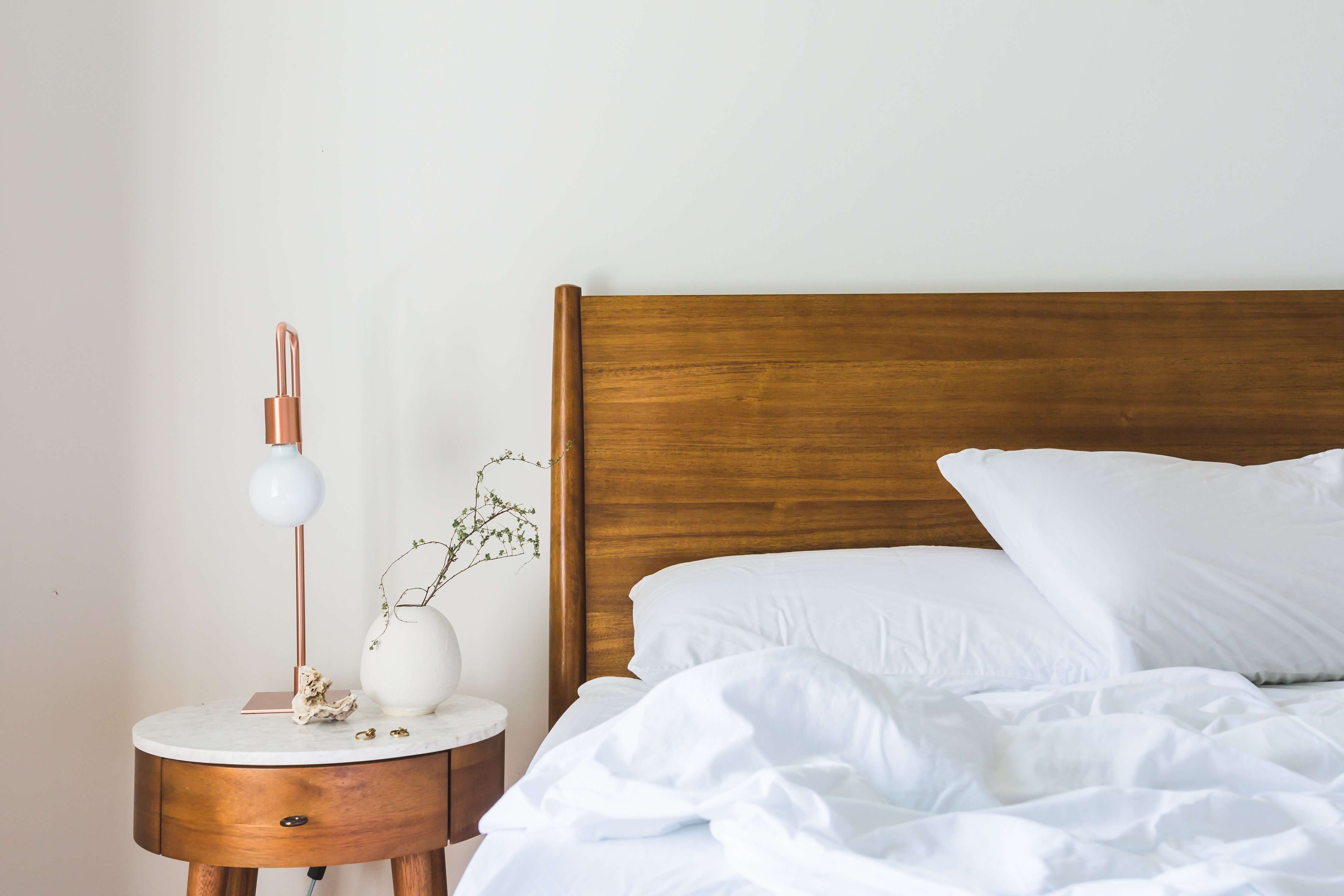
By Marie Roviello
There was a time when we played in our yards, sat in the grass, chased fireflies, rode our bicycles, and bathed in the sunshine. Friends knocked on our door. Mom flashed the porch lights when it was time to go home. Many of our toys were even made by hand. Our beds were wrapped in grandma’s crocheted wool blankets, and our cozy pajamas were made of cotton. Our floors were made of wood. We bought bread from the bakery down the street. And we didn’t know how good we had it.
Things have changed.
Chemicals, Everywhere
Our yards are sprayed with cancer-causing chemicals that even kill fireflies. We have to stay out of the sun, wear sunblock, or take our chances because some sunblocks are even worse for us than the sun. Our food isn’t pure. No one surprise visits anymore. People text more than they talk to each other. Computers replaced impromptu visits. Our toys contain cancer-causing phthalates, and our mattresses, sofas and pajamas are full of endocrine-disrupting fire retardants that can lead to infertility.
It takes 26 seconds for chemicals to be absorbed by our skin into our bloodstream, and from the moment our babies are born, there are over 200 chemicals in their blood.
We breathe, absorb and ingest chemicals—every damn day.
Our environment is changing how we live, our views, and our food. We spend 90% of our time indoors. We are stressed out and unhealthy. So is our planet. Our homes and offices are full of chemicals and toxins that are proven to cause disease and dis-ease.
It’s complicated and confusing, and every road seems like an uphill battle or a dead end. Sometimes I feel like I need a PhD to figure this stuff out. Don’t you?
Chronic Illnesses
Chronic illness is at an all-time high. In America alone, more than 250 million people are sick or dealing with mystery symptoms. These are people leading diminished lives with no explanation—or explanations that don’t sit right or make them feel even worse. 2
You go from one doctor to the next with chronic illnesses only to be told it’s all in your head or to take a pill for the rest of your life. You can change what you eat, but what about the stuff in your home and office?
Allergies
Allergies, monthly headaches during your menstrual cycle, asthma, eczema, anxiety, fatigue, hair loss, brain fog, confusion, weakness, aches and pains, and a host of other health issues can all be exacerbated by various environmental issues. You may be wondering what is going on in your environment that is causing your unique health complications. Here are just a few of the environmental triggers you may be up against: 2
- Carpet Chemicals—Brand-new carpet contains solvents, fungicides, and other toxic chemicals that can trigger seasonal affective disorder-like symptoms and other conditions and symptoms connected with any active or inactive viruses you have. 2
- Paint—Fresh paint can have a negative impact on your health, and it takes time for the paint fumes to dissipate. If possible, use low-VOC paint, which may somewhat help in lowering the toxins. Both viral and bacterial conditions are more easily triggered when someone is living in an environment that has been freshly painted. 2
- Mold—Black mold can be a major trigger for neurological viruses that create Lyme disease symptoms, a variety of multiple scleroses, or a host of other health-related issues.
- Water—You may not know that you are often bathing in chlorine and fluoride when you run a bath or step into the shower. These two substances are not ideal for your health or healing.
- Air—In addition to VOCs, dust, allergens, mold, bacteria and viruses, every state in the U.S. has areas that are specifically designated for agricultural use. In the areas that are used for farming most conventional vegetables and certain conventional fruits, they are sprayed multiple times a week with rodenticides, herbicides, pesticides, insecticides, and fungicides.
- Parks, Lawns and Golf Courses – Lethal fertilizers, pesticides and herbicides cover most parks, sports fields and golf courses, and most people who play on these courses will suffer some negative health consequences because of it. Not only are your feet, ankles and legs exposed to tremendous amounts of pesticides and herbicides, but you are breathing in these toxins, as well.
- New Cars, Furniture & Clothes—Toxic solvents create that “new car” smell and can linger in a vehicle and cause problems for up to six months. If you have allergies or chemical sensitivity and you get a new car, know that you may suffer with these symptoms more during the first few months after your purchase. If you buy a new piece of furniture, be aware that it is most likely laced with formaldehyde, fungicides, flame-retardants and nanotechnology. It may also have a smell, which is due to the high level of solvents typically found in new fabrics. Even if the furniture does not smell, solvents are still usually present. Due to the toxic nature of the solvents, just sitting on a new piece of furniture could slow down someone’s healing.
- Detergents & Hair Care Products—When doing laundry, it is important to use a natural detergent. Conventional detergents usually contain petrol oil, which is an ingredient that may play a part in retarding your healing efforts. This is also true when it comes to the creams, gels, sprays and other products you choose to use on your hair.
- Perfumes & Colognes—Perfumes and colognes are harmful and should be avoided whenever possible. Chemical compounds used in perfumes and colognes have the same chemical compound construction as particular pesticides and herbicides.
- Air Fresheners—Synthetic air fresheners contain over 100 chemicals, and those mystery ingredients may be endangering your health. Instead, use plant-based essential oils.
- Plastic—We all know about plastics and the harm they cause to the environment, the energy they require to make, and their links to cancer, obesity, allergies, thyroid and other hormone disruptors. Opt for glass and stainless steel whenever possible.
- Invisible Issues—Conventional produce, carpet cleaning and dry cleaning all contain toxins that can stir up health issues.
But, there’s hope.
People are waking up. Social media is helping. It’s not a mystery anymore. We’re demanding answers and better alternatives. Companies are noticing and changes ARE happening.
What am I talking about? WELLNESS.
It goes beyond a trip to the gym, organic, gluten-free, recycled, upcycled, sustainable, compostable, and plastic-free. It means everything and anything that affects our bodies and our senses.
It’s a process of becoming aware of and making choices toward a healthy and fulfilling life. Little by little, one step at a time.
We all know there are changes we can make on a personal level to lower our exposure to chemicals found in our air, water and everyday products, and we already know many of them. It can be difficult to do in a world drowning in toxins such as plastic, phthalates, fragrances, formaldehydes—and the list goes on. It’s exhausting, isn’t it?
The Workplace
We spend 90% of our time indoors, and most of us are working in a building other than our homes. It’s out of our control and toxins are making us sick.
Everything from lack of mobility, poor air quality, food choices, and stress affect us. Buildings shape and influence all these factors. As a result, the workplace has a huge part to play in this as a place where people spend most of their waking hours.
There’s a movement to create wellness inside buildings. It began with the green energy movement, towards sustainable products, and now we’re focusing on health and well-being. What is it? It’s the International Well Building Standard and it’s the first of its kind because it focuses on wellness.
It focuses on everything from lack of mobility, poor air quality, and workplace stress which affect our health. This standard was developed over seven years, and the process involved scientific and medical expert research and review.1
It measures how the built environment impacts the human body systems such as cardiovascular, digestive, endocrine, immune, nervous, reproductive, muscular, respiratory and several others.
The result is a combination of environmental health, building design, human health and behavioral factors. Seven different categories make up their standards: Air, Water, Nourishment, Light, Fitness, Comfort and Mind.
1 All seven factors use requirements designed to improve overall health, mood, sleep, nourishment, and performance of a building’s occupants.
LEED is concerned with responsibly resourcing materials and sustainable building practices. The WELL Building Standard is about the effect of the built environment on the individual, both physiologically and psychologically, and it was launched to help improve health and quality of life.
Things have changed and they’re continuing to change on every level. Imagine how wonderful life could be, living and working in buildings designed to promote wellness, breathing fresh air (maybe even infused with oxygen), using natural products that are chemical-free, lowering our stress levels, harnessing natural light instead of artificial light, eating healthy organic food and drinking clean water, experiencing replenishing sleep, improving our health, mood, and performance as well as lowering our risk factors for chronic illness and cancer.
That change would be WELL worth it.
Keep up with all of Green Living’s articles by visiting our website.
Marie Roviello is the founder of MarieRoviello.com
, a modern, non-toxic and vegan interior-design firm based in Los Angeles and Scottsdale.






